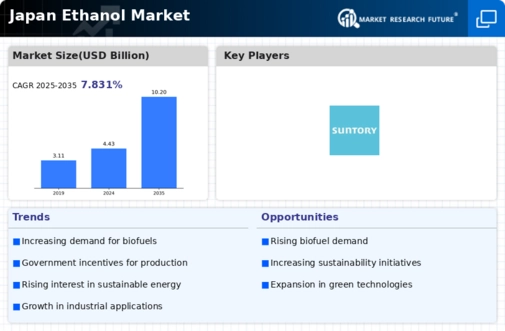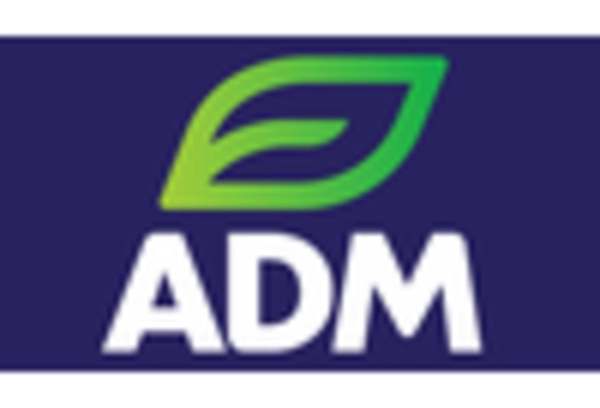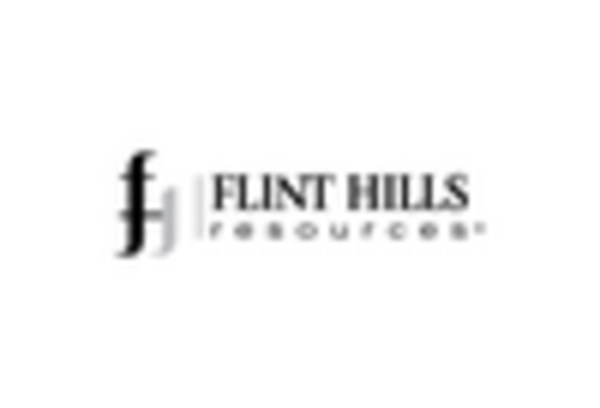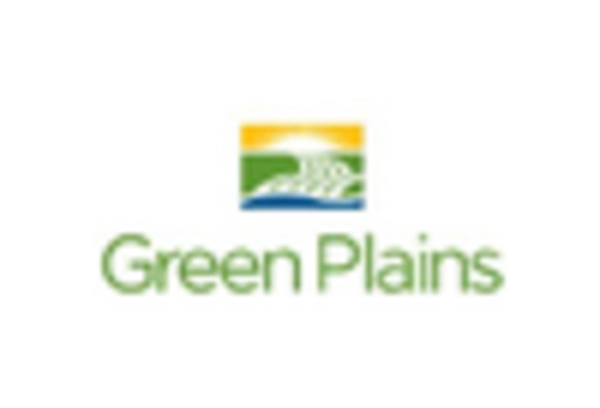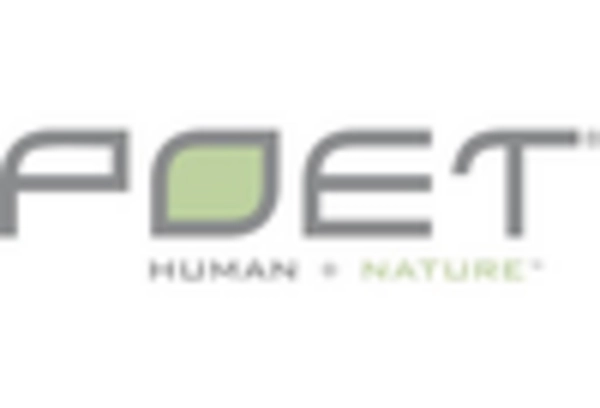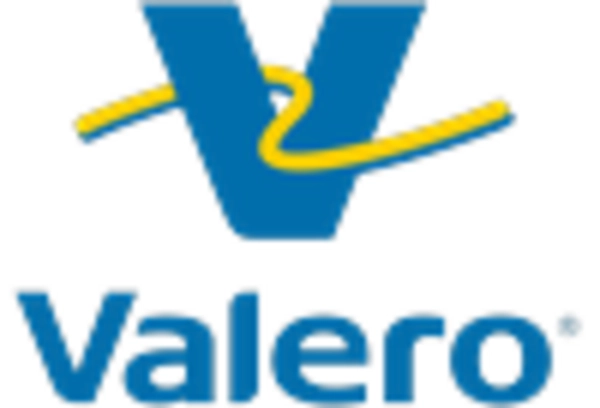Japan Ethanol Market Summary
As per Market Research Future analysis, the Japan ethanol market Size was estimated at 5.9 USD Billion in 2024. The Japan ethanol market is projected to grow from 6.36 USD Billion in 2025 to 13.53 USD Billion by 2035, exhibiting a compound annual growth rate (CAGR) of 7.8% during the forecast period 2025 - 2035
Key Market Trends & Highlights
The Japan ethanol market is experiencing a positive trajectory driven by regulatory support and consumer demand for sustainable fuels.
- Regulatory support for biofuels is enhancing market growth in Japan, particularly in the transportation sector.
- Technological advancements in ethanol production are likely to improve efficiency and reduce costs, fostering market expansion.
- Consumer demand for sustainable fuels is increasing, with a notable shift towards biofuels in urban areas.
- Rising environmental awareness and government incentives for biofuel production are key drivers propelling the market forward.
Market Size & Forecast
| 2024 Market Size | 5.9 (USD Billion) |
| 2035 Market Size | 13.53 (USD Billion) |
| CAGR (2025 - 2035) | 7.84% |
Major Players
POET LLC (US), Archer Daniels Midland Company (US), Green Plains Inc. (US), Valero Energy Corporation (US), The Andersons Inc. (US), Flint Hills Resources LLC (US), Pacific Ethanol Inc. (US), Cargill Inc. (US)


